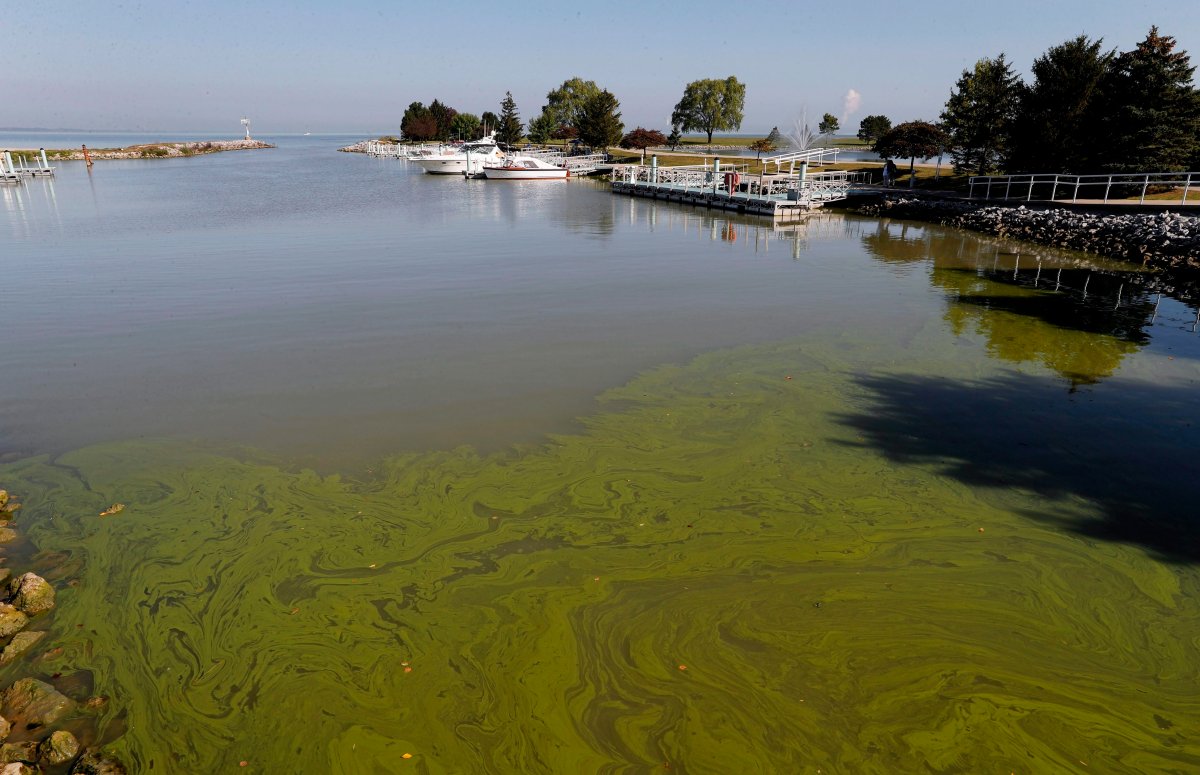Does a lake have the right to live, the same way a person does?

Activists in U.S. town on the banks of Lake Erie are arguing for just that, saying that the lake — which has been plagued by dead zones and toxic algae overruns commonly thought to be caused by pollution — deserves to be protected in the same way a human being is protected.
FROM THE ARCHIVES: Why Lake Erie’s toxic algae is a nightmare for Canada, too (2014)
“We believe the lake has the right to life, just like people have the right to life. The lake has the right to life to live, flourish, thrive, be healthy,” said Tish O’Dell, the Ohio spokesperson of the Community Environmental Legal Defense Fund.
“It’s a living being and, you know, we need it. We can’t survive without a healthy environment.”
READ MORE: Can lands and rivers be people? In New Zealand they can

The fund helped draft the Lake Erie bill of rights, which is to be voted on Feb. 26 by residents of Toledo, Ohio.
The bill outlines that “it shall be unlawful for any corporation or government to violate the rights recognized and secured by this law.” If enacted, people would be able to sue corporations if the lake’s rights have been violated.
The bill is the first proposed law in the U.S. that recognizes a distinct ecosystem, but it’s following in the footsteps of similar bills around the world.
WATCH: Waves of cuttlefish wash up on shore in Chile

In New Zealand, the country’s third largest river and a national park was given personhood status. And in Ecuador, the rights of nature are protected in the country’s constitution.
It shows a growing change in how people think about environmental law, Canadian environmental lawyer Dayna Scott told Global News.
“People are now starting to understand that that’s a structural failure with the way environmental laws are designed and the way the rights of people and corporations are weighed against environmental quality,” she said.
Previously, environmental values were just one consideration that was weighed against other interests (specifically economic impacts like job creation), she explained.
And while there are laws that limit the amount of pollution, activists say that isn’t enough to stop damaging ecosystems like Lake Erie.
READ MORE: How do we change the conversation about climate change — and start doing more about it?
O’Dell says the way the law recognizes nature needs to change.
“It’s switching the whole legal idea that you have to wait until the harm happens and then you have to prove that so-and-so did it and how much they did and then they’ll pay money and make it better somehow.”
In Canada — the idea isn’t so foreign, Scott said.
“There’s been a real revitalization of Indigenous law across the country and communities are starting to enact their own systems for environmental assessment and for permit approvals and that kind of thing,” she said.
“I suspect that’s where we’ll start to see it in Canada and hopefully we’ll start to get a real kind of cross-fertilization between Canadian law and indigenous law so that we can start to adopt some of those approaches more broadly as well.”




Comments